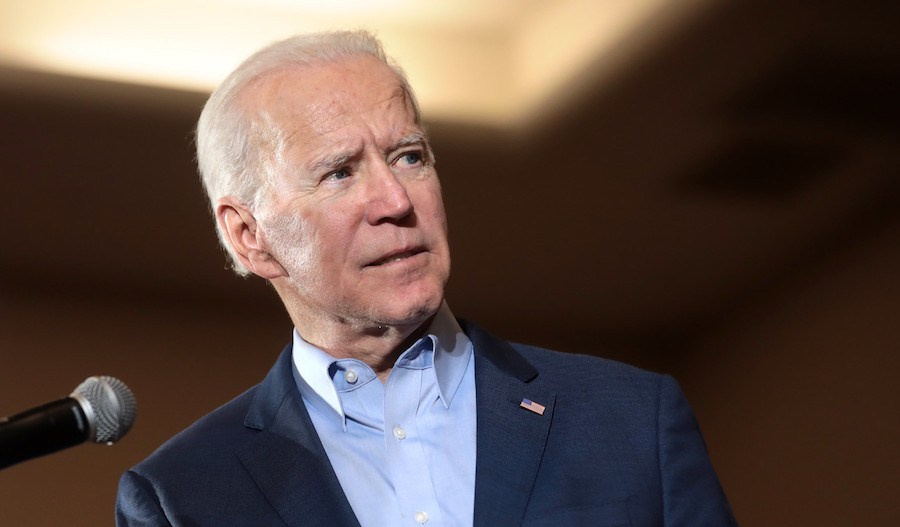Supreme Court curbs EPA’s climate authority in blow to Biden

A deeply divided US Supreme Court dealt a major blow to President Joe Biden’s climate-change agenda, restricting the Environmental Protection Agency’s ability to curb power-plant emissions and saying Congress would have to act to give the agency more authority.
The 6-3 ruling interpreting the US Clean Air Act will keep the administration from imposing the type of wide-ranging emissions-cutting plan the EPA tried to put in place when Barack Obama was president. It limits the agency’s available tools amid increasing evidence that climate change is causing rising sea levels and more extreme weather patterns. The ruling could have a broad impact and affect other regulatory agencies.
The majority said that, while the EPA can regulate power plant emissions, the agency can’t try to shift power generation away from fossil-fuel plants to cleaner sources, as Obama’s Clean Power Plan sought to do. Writing for the court, Chief Justice John Roberts said Congress needs to speak more explicitly to give an agency that much power.
“A decision of such magnitude and consequence rests with Congress itself, or an agency acting pursuant to a clear delegation from that representative body,” Roberts wrote.
The court’s three Democratic-appointed justices — Stephen Breyer, Sonia Sotomayor and Elena Kagan — blasted the ruling.
“The court appoints itself — instead of Congress or the expert agency — the decisionmaker on climate policy,” Kagan wrote for the three dissenters. “I cannot think of many things more frightening.”
The ruling casts fresh doubt on Biden’s pledge to reduce US emissions in half by the end of the decade and his goal of a carbon-free electric grid by 2035. Hitting those targets will be impossible without regulations to stifle greenhouse gases from oil wells, automobiles and power plants, as well as tax incentives designed to spur clean energy, according to several analyses.
A White House spokesperson characterized the ruling as a devastating decision that damages the administration’s ability to address climate change. The White House also called on Congress to act, something the high court decision left as a possibility.
“The Supreme Court’s decision does not mean the end of President Biden’s climate agenda, but the administration will now have to quickly assess which regulatory actions it can still move forward on and which actions it must rethink or abandon,” said Kevin Minoli, formerly a senior official in the EPA’s Office of General Counsel.
Key doctrine
Roberts pointed to the so-called major questions doctrine, saying “we presume that Congress intends to make major policy decisions itself, not leave those decisions to agencies.”
The court’s reasoning could spur challenges to other federal regulations, from EPA automobile emissions curbs to vaccine mandates from the Centers for Disease Control, particularly when issues of congressional authorization are involved.
“The big thing that this case makes clear is that there is now this major questions doctrine that agencies will have to grapple with,” said Tom Lorenzen, of Crowell & Moring, a former assistant chief of the Justice Departments environmental division. “You can expect opponents of federal regulations to be raising that in litigation challenging a host of EPA and other regulations, including automobile emissions.”
Under the Clean Power Plan, states were encouraged to shift electricity generation from higher-emitting sources, such as coal, and toward lower-emitting options, such as renewable power. The Clean Power Plan never took effect, and when Donald Trump became president, the EPA rescinded the rule and adopted a narrower approach.
The Supreme Court case grew out of a group of legal challenges to the Trump rule. A federal appeals court in Washington said the Trump plan was based on an overly restrictive read of the EPA’s authority.
That prompted backers of the Trump rule — companies including Westmoreland Mining Holdings, and 19 Republican-led states led by West Virginia — to turn to the nation’s highest court. Their appeal said the lower court ruling would let the EPA remake the US electric system, going well beyond what Congress intended when it enacted the Clean Air Act in 1970.
The Biden administration said the text of the Clean Air Act doesn’t preclude efforts to shift power generation to cleaner sources. The White House drew support in the case from a mix of industries, including technology companies and electric utilities, as well as environmental organizations.
The case centered on a Clean Air Act provision that requires the EPA to identify the “best system of emission reduction” for existing pollution sources and then tasks states to come up with implementation plans.
The cases are West Virginia v. EPA, 20-1530; North American Coal Co. v. EPA, 20-1531; Westmoreland Mining Holdings v. EPA, 20-1778; and North Dakota v. EPA, 20-1780.
(By Greg Stohr, with assistance from Kimberly Robinson, Jennifer Hijazi, Stephen Lee and Peter Jeffrey)
More News
Capital signs civil works, tailings contract with Reko Diq
The contract will run through December 2028 and is expected to generate over $60 million in annual revenue.
April 02, 2025 | 03:31 pm
PDAC video: Energy Fuels produces rare earths using fast process, CEO says
The company made on-spec neodymium-praseodymium in less than a week at its White Mesa uranium mill.
April 02, 2025 | 12:52 pm
{{ commodity.name }}
{{ post.title }}
{{ post.excerpt }}
{{ post.date }}



2 Comments
Quentin Chapman
Justice Kagan finds it frightening. What is really terrifying is her willingness to accept the suppression of science by politics.
BOB HALL
FRIGTEING! The amount of governing the nation is delegated to agencies. Even worse is folks expecting that delegation will go unchallenged. If delegation is done in the open light of congress that is one thing, but to use the back door of lefislation that was passed decades ago is a stretch. BTW most of our agencies are run this way.